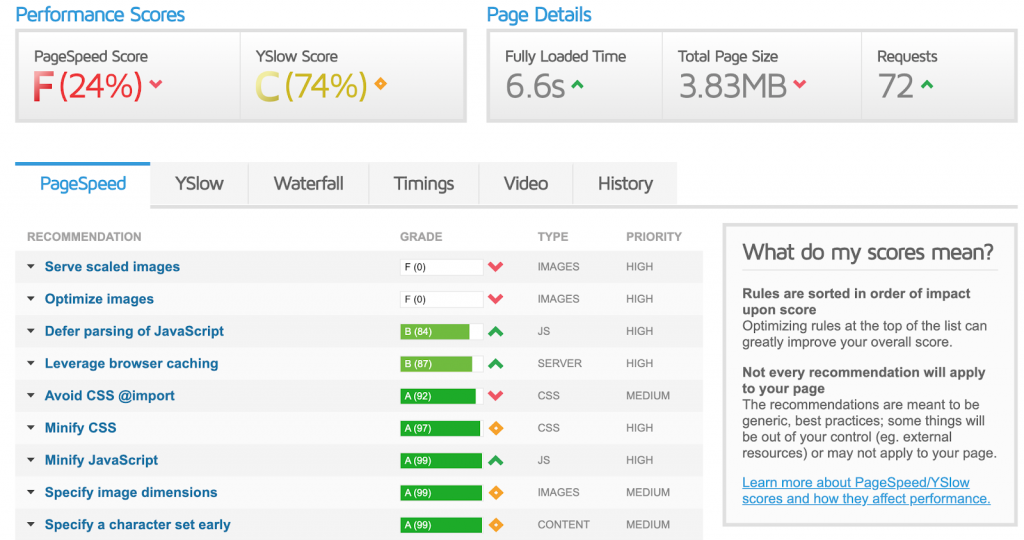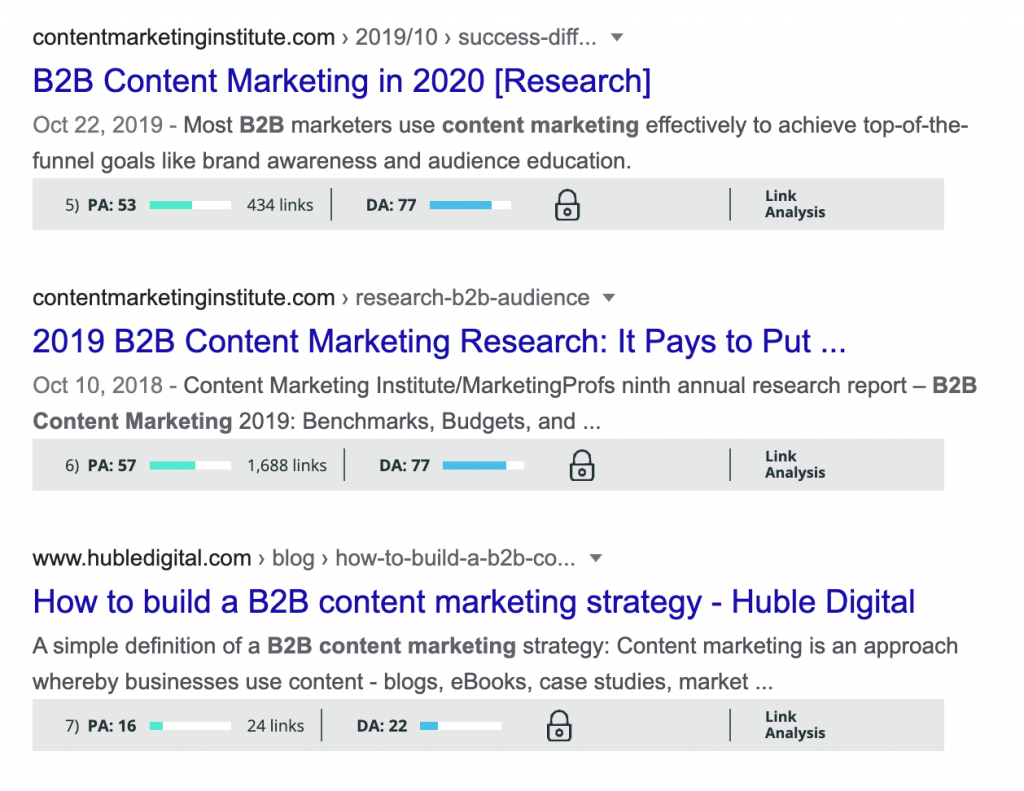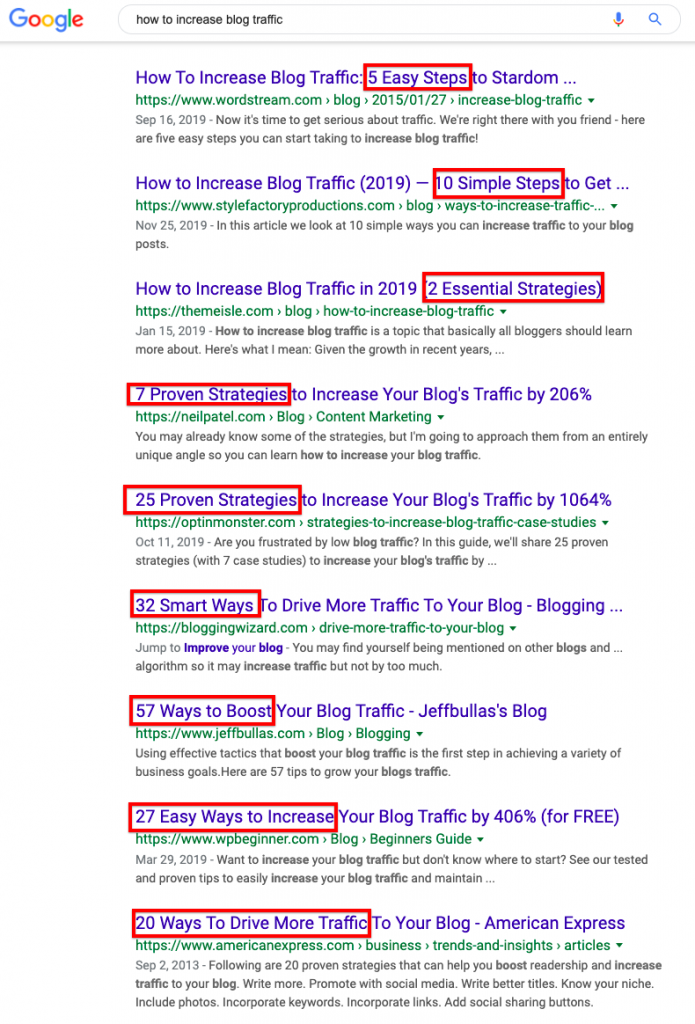Content marketing is a numbers game. Even if you get everything right, there’s still a chance that it just won’t work. However, some strategies minimize this risk more than others, and quality content is one of them.
If you consistently publish engaging, high-quality content on a regular basis, you can expect to see organic traffic growth.
Sounds pretty straightforward, doesn’t it? But while some people find that creating new content is fun and comes quite easily, others don’t. Not to worry! There’s already a goldmine of organic traffic hidden in your existing content.
How so? Well, there are changes on SERP frequently, so while your competitors are busy working on amazing content and link building, search intent can easily be shifted and all that hard work suddenly becomes quite irrelevant.
So rather than constantly churning out new content that might have a short lifespan, your content team might be better off taking existing content and simply optimizing your existing good content.
Use the following framework for diagnosing any loss or big opportunities in content performance.
Technical review
There are plenty of articles out there regarding the importance (or otherwise) of technical excellence when it comes to rankings. Google says that site speed is a ranking factor. However, some SEO influencers undertook various testing regimes and were able to achieve good rankings with slow websites and errors.
It makes you start to wonder – why am I wasting my time reading long and contradictory case studies all day when I could be improving my website performance with tried and tested methods instead?
Let’s look at some surefire ways to boost your website’s technical performance:
Site Speed
Use a tool like GTmetrix or Pingdom to check for long load times.

While you can implement some of these fixes for yourself, you should consider hiring a developer for more advanced tasks. Unless you have some serious edge cases, all fixes can be easily implemented by an experienced person in 4-6 hours.
Internal Linking
Internal links still play a big role in getting content to rank – according to Andrey Lipattsev from Google, links are still one of the three most important ranking factors with content and Rankbrain.
So how to optimize your link strategy? You can start with Oncrawl, which is an ideal tool for evaluating existing internal linking.
There are no rules about which anchor texts to use and how many internal links you need – a good way to start is to check out what high-ranking competitors are doing. Use Oncrawl to evaluate those who have high numbers of organic traffic, and take notes on their internal linking practices. Could you be doing something similar? Give it a try and see if it bumps up your rankings.
The Oncrawl internal link guide can be useful.
Broken links
The best practice for broken links is to create new links from your content resources or research, making it easier to ensure that they remain active and relevant. Check periodically through your content to ensure that all links are working and up-to-date and if any are broken, fix them.
URL Structure
Check out the URL structure of currently high-ranking pages and compare it with the structure of your URL – yours might be too long or have too many numbers and symbols. Before changing a URL, be sure that it doesn’t have too many backlinks, you might already have good traffic to a specific blogspot, but the URL doesn’t contain the main keyword and any backlinks. Try to add a keyword in the URL, it can make a big difference.
Competitors on SERP Audit
When you’ve fixed the basics listed above, next it’s time to move on and understand the competition of existing content keywords.
Average Referring Domains for Ranking Content
Look at the average amount of links on the first page of results on the SERP. For this I use MOZ, but you can do it with Ahrefs, too.

If all the content you find has more links than your current article, you’ll want to continue outreach. If you have a lower number of referring domains than your competitors, but you are still ranked in TOP 10 results, it is time to test Title Tag and Meta description.
Title Tag and Meta Description
Title Tag and Meta Description is the main entrance to your website. Many content marketers spend too little time on meta descriptions – it’s important to sell ideas if you want people to click on your results on Google.
Important note: When I see my content in the TOP 10 results, I immediately start testing on Meta description. You need to collect old meta descriptions and track the date of changes – if you lose positions, you can revert to the previous version.
Also, analyze Google Ads results. PPC people spend a lot of time optimizing for CTR. You can always get good ideas from them.
Featured snippets
There is no exact process for how to create featured snippets, but an analysis of SERP can give you an idea of which questions to answer and what content structure is best to use.
Content Audit
The final step to high-ranking heaven is to audit your content. Nobody likes reviewing their old content – we mostly think that it’s awesome as it is and if we get some feedback about it, we can become very protective! But, as I mentioned earlier, the competition in Google results is very dynamic and constantly changing, so no need to take it personally.
Google Analytics metrics
The optimization of speed, title tags, and other aspects of your website ends up being pretty useless if you don’t pay attention to content quality metrics like Bounce Rate, Exit Rate, and Avg. Time on Page.
It’s important to gauge whether the content is actually interesting and useful for your readers – we don’t want to be wasting their time with irrelevant messages. For example, if you notice that the Bounce Rate of your Ultimate Guide is 98 percent, then something is clearly wrong with this particular piece of content.
Matching Search Intent
Study what already shows up in Google, so you have a better idea about what to write.

Look at the example above. If you see that all TOP 10 results are listicles of strategies, while your content is totally different, it’s going to be really difficult to compete with that. Your best option might be to go with something similar.
You need to help Google to determine which query you’re targeting. H2 structure, Alt texts for images, and relevant internal links are important signals to crawlers.
At the end of the day, your aim is to solve the user’s query and fill their search intent.
Over Optimization
Keyword stuffing, creating 100 internal links with the exact same anchor texts – these practices are still alive today. To ensure that your content isn’t following the best practices from 2013, take care of your anchor texts when link building.
[Case Study] Handling multiple site audits
Bad Copy
It’s not good enough these days to write 2,000 words simply because your competitors are doing so.
Sure, long content can increase scroll depth and time on page, but if your readers see ZERO benefits from all of your unnecessarily long-form articles, you won’t be getting conversions.
First, you need to understand your customer pain points. Sounds too difficult? Just talk with your support team. When you’ve got some good topic ideas, go and explore Reddit and Quora to find a backlog of different questions related to this topic.
Map these topics with your existing content and update articles with the questions and answers relevant and important for real people.
Important note: When doing bigger updates on existing content, use Google Search Console data about the performance of specific articles – you don’t want to accidentally delete certain paragraphs with specific keywords that are generating hundreds of clicks.
Conclusion
It’s an absolute waste of your time and money if your content isn’t giving you a good ROI. With a little effort, you can turn it around and have your content working well for you.
Remember: Optimize. Analyze. Repeat. Your content is never finished!
Because after all, optimizing your website from more organic and social traffic is a continuous process, and your tooling and work-flows should be continuous as well.

